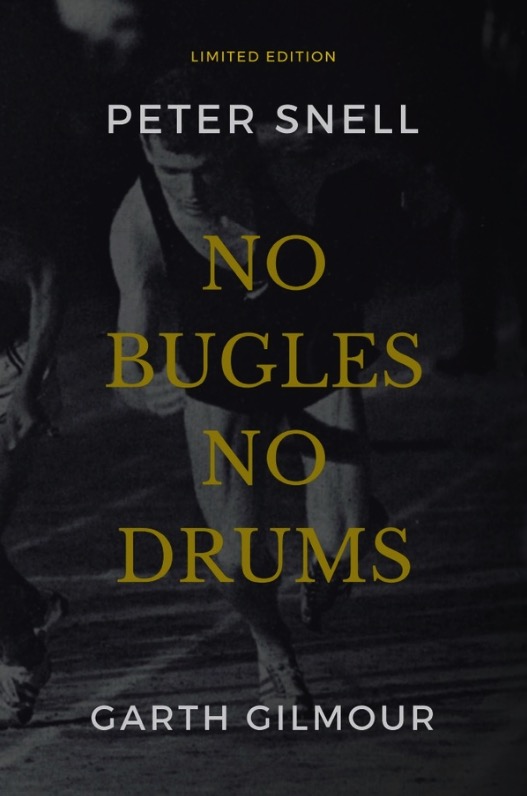By Len Johnson
Universality. In the long and endless deliberations about the new qualification system for Olympic Games and world championships, who knew about the universality clause.
Well, I guess most of us did. Most who had bothered to read the qualification system all the way through – many would have read the first of nine pages, where the target size for each event is found, and the last, containing the automatic qualifying standards, and skimmed through the pages in between. That’s if they read them at all.
I’ll venture another guess. Most of those reading the document would have known what the universality clause is, even if they had not known of it by name. It is the clause giving all National Olympic Committee’s (NOCs in the IOC’s alphabet soup bowl) that do not have a qualified male or female individual athlete, nor a qualified relay, have the right to enter one athlete in the Games.
Overwhelmingly, the event of choice for such NOCs and athletes is the men’s 100 metres. The non-qualified athletes now make up the first round of the men’s event; qualified athletes come in for the second round, or what used to be referred to as the quarter-finals. The women’s 100 is run over three rounds.
View this post on Instagram
A few, however, are nominated in other events and those few represent a – yet another, really – spanner in the works for those athletes desperately trying to squeeze into the impacted event quotas before the final deadline of 29 June.
The order of filling the quotas for each event is: automatically qualified athletes first; universal places second; quota places based on the world rankings third. The universality places – finalised with World Athletics already (21 June was the deadline to apply) – will be awarded at the cost of some athletes who believed they might just have squeezed into the quota.

It all sounds a little comical. You work your bum off right until almost the very end of the qualifying period chasing a spot in the Olympic field only to find, with a week to go, that you’ve suddenly been shunted back in the order by an unqualified athlete with a universality spot.
If you’re familiar with the Marx Brothers comedies, you will recall the contract negotiation between Otis B.Driftwood (Groucho) and Fiorello (Chico) in ‘A Night at The Opera’. Starting with a contract several metres long, Driftwood and Fiorello appear to have reached agreement when Fiorello’s eyes light suspiciously on the one remaining clause.

“It’s alright,” replies Driftwood, “that’s in every contract. It’s what they call a ‘sanity clause’.”
Fiorello laughs uproariously: “You can’t fool me,” he declares. “There ain’t no sanity clause.”
Come 30 June, there will be quite a few athletes wishing they could say: “You can’t fool me . . . there ain’t no universality clause.”
A post this week from athlete representative Sean Whipp alerted me to the implications of the universality places. We will not know exactly how they pan out until the qualifying window closes on 29 June. We’re dealing with small numbers, so an invitation accepted here, or withdrawn there – not to mention the last few days’ competition – could change some events.
The one thing you can’t account exactly for in season planning – universality places. I’m all for inclusion of smaller nations, but this makes event planning/qualification for those travelling from AUS – EU etc considerably more difficult. Data below accurate as of today. pic.twitter.com/a1WPkmT9TL
— Sean Whipp (@seanwhipp) June 23, 2021
It should be noted first that the figures were crunched with a week to go. We will not know the final breakdown until next week, with a slew of national championships and ‘last chance’ meetings this weekend. Given we’re talking relatively small numbers – 56 is the highest number in events held in-stadium, 24 the lowest; 80 is the target size for the marathons – a handful of big Qs could yet change things either way.
What we can see however is the mix of qualified and quota athletes across events. The stated aim of the system was that half the field should be made up of qualified athletes and half filled from the world rankings.
As things stood at the most recent update, however, only the women’s 800 was right on the quota target. There were 24 automatically qualified athletes and 24 rankings/universal.
Both marathons are over-subscribed: 120 men and 96 women have achieved the auto-qualifier (did someone say “shoes”?). As the qualifying window has closed for the 26-miler, these figures won’t change.
Only five other events – three men’s, two women’s – fall in the 45-55 percent bracket for auto-qualifiers. This might suggest that wherever the standard is set, athletes just readjust their sights and qualify in the same numbers. It will be an interesting correlation study to see whether performances of big-Q athletes in Tokyo will rise correspondingly with the higher entry standards.
One final word on the new qualifying system. In line with many others, my view has been that the system is inequitable in offering all athletes in all nations access to the higher levels of competition required to qualify through the rankings. My personal view is that there is not a sufficient gain for the sport to justify what is basically a lop-sided system.

That said, it is also true that we won’t know how fairly the system works until it has been used several times. But the special nature of the system’s first test – two qualifying windows, two national championships for some athletes against one for others, easier access to higher-ranking events for in some areas – limits its usefulness. The system was to have been tested at the Doha 2019 world championships, but World Athletics deferred its application after widespread apprehension as to its impact.
Which means, some four years after the rankings system was announced, we still don’t know how it will work in a ‘normal’ year. That can’t be a good thing.

















